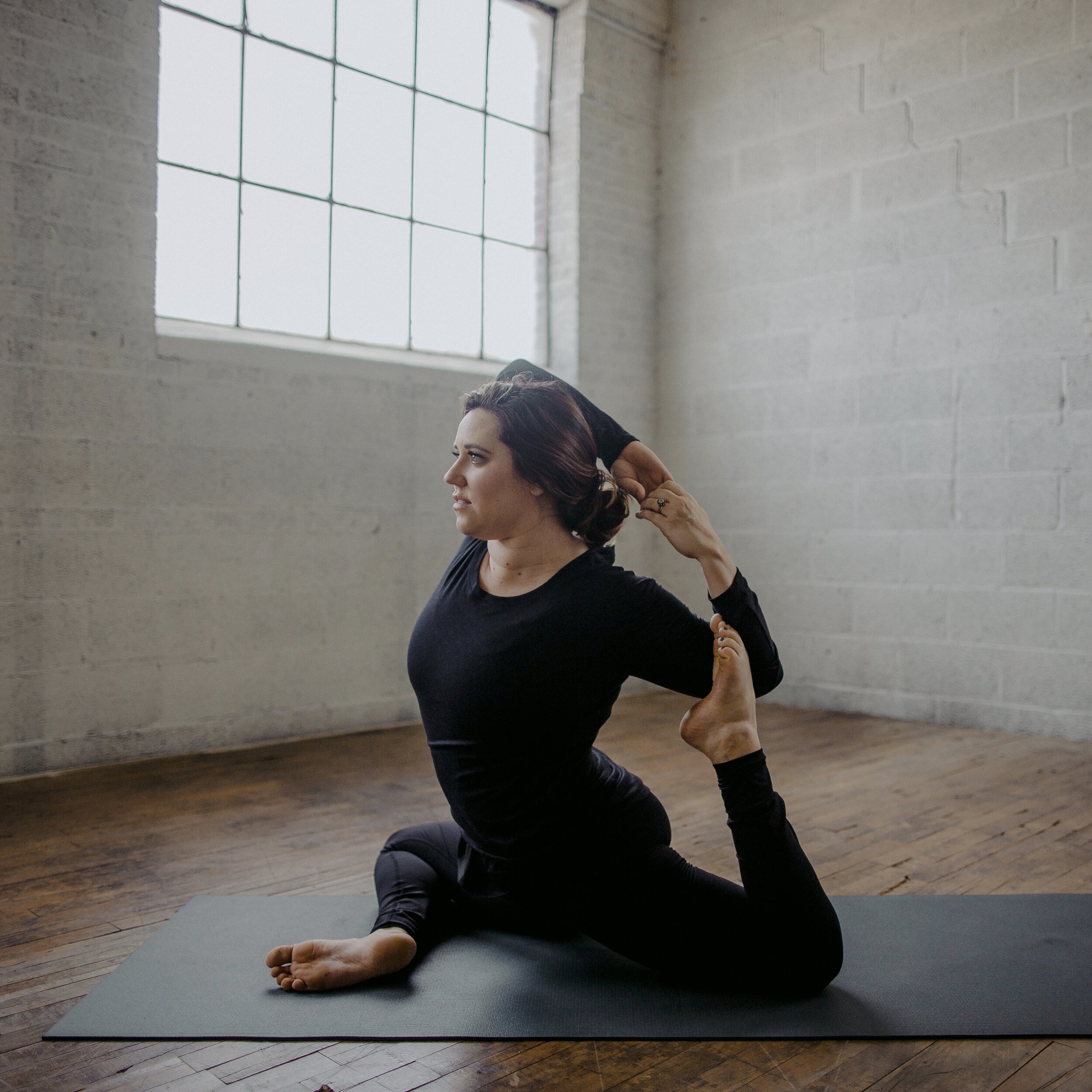Just because you CAN, doesn't mean you SHOULD
Mermaid pose.
The first time I actually got into this asana was 4 or 5 years ago in a class taught by my friend and Instagram maven Chris Emmer of Sweaty Wisdom (and she deserves some serious kudos for her genius step-by-step breakdown — Mermaid had always been a major “huh?” for my spatially challenged brain). Right away, I felt that thrill of astonished accomplishment that always seems to accompany the first time you nail a “big” pose like Crow or Scorpion or Forearm Wheel.
And, physically, it felt okay. That first time. And for the next few times after that.
But then it started to not feel so okay anymore.
I can do Mermaid (or at least I could the last time I tried — which might have actually been for this very photo, come to think of it), but it doesn’t serve me. It makes my body — particularly my hip joints and low back — feel crummy.
Which leads me to the truth that I wanted to share with you — just because you CAN, doesn’t mean you SHOULD.
I often tell my private yoga clients that, for me, there are really three categories of yoga poses:
Poses that are helpful for your body — they create more strength + stability + ease of movement and make you feel good.
Poses that are basically neutral for your body — they don’t do a heck of a lot for you in the long run, but may feel okay (or even good) in the moment.
Poses that are harmful for your body — they push you further into imbalance, don’t agree with your unique anatomical variations, or over-stretch areas that actually need less flexibility and more strength. These poses might not feel bad while you’re in them (although they can), but you’ll probably notice that you don’t feel great coming out of them or maybe for a few days after including them in your practice.
When the goal of your yoga practice is to FEEL GOOD, to move in ways that serve you, to connect with and honor your body, your practice should be mostly poses from category #1 with a few poses from category #2 sprinkled in if you enjoy them.
Poses from category #3 don’t belong in your practice if these are your goals. They just don’t.
The only real reason to include poses from category #3 in your yoga practice is if your goal is to perform the most aesthetically pleasing asanas your body is capable of or to make your practice as “advanced,” asana-wise, as possible.
Since those aren’t goals that resonate with me (or serve my highest good), when Mermaid became a category #3 pose for me, I stopped doing it. [Side bar: it’s worth noting that which category a particular pose belongs to for you may shift over time or even day to day.]
So when you’re on your mat and you hear someone (your teacher, that little voice inside your own head) say, “if you can Wheel, WHEEL,” pause. Breathe. Remember that just because you can, doesn’t mean you should.
And, like most things in yoga, what’s true on your mat is true off your mat too.
Which takes me back to this past fall. When the sweet little yoga studio that I’d been teaching at for the past year closed, another boutique studio in the area offered me the opportunity to teach a class or two a week. I almost said yes.
I could have done it. I had those days/times free in my weekly schedule. The studio, the staff, and the yoga community they’ve created are absolutely lovely.
But the more that I considered what I’m needing in my life for 2020 and beyond and what teaching more group classes each week on those particular days/times would require of me, the easier it was to recognize that just because I COULD, it didn’t mean that I actually SHOULD.
So I declined — with grace, honesty, and kindness.
My wish for you is that you can learn to be okay doing that too — saying “no” kindly, but without apology. Maybe, one day, it’ll even feel safe, comfortable, and like no big deal.

